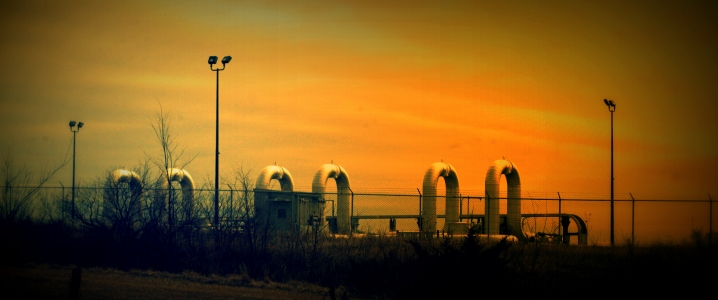Oil producers are finding themselves in kind of a pickle. While oil prices are indeed on the rise, many producers are unable to take full advantage of this nicety because they have locked some of their production in at lower price levels.
This time last year, when WTI Crude prices were around $45 a barrel, U.S. shale producers were looking for opportunities to hedge some of their future production, whenever oil prices went up.
Companies hedge their production by purchasing financial options to ensure a minimum price for their crude oil in the future, thus protecting their revenues and production in case oil prices snap sharply back.
During last year’s low price environment, hedging at $55 a barrel WTI looked like a bargain. Producers were anxious to sell the barrels they had, which would immediately garner only $45 per barrel, at that higher price, no matter what the spot WTI price would be when their production hit the market.
But prices went far beyond $55. This year in June, oil prices are significantly higher than at the same time last year, and producers that hedged barrels at $55 WTI cannot take full advantage of the recent oil rally that sent WTI to above $70 last month, before pulling back to around $66 today.
According to estimates by energy analytics and advising firm PetroNerds, hedges at $55 could cost the top 25 U.S. shale producers US$1.73 billion in combined sales revenues in the second quarter of 2018, if WTI prices average $70 a barrel in Q2. This potential loss accounts for 6.4 percent of the 25 firms’ combined revenues for Q1—US$26.98 billion. Related: Saudi Arabia: Deal To Gradually Ease Cuts Is ‘Inevitable’
In the first quarter, the 25 companies—whose total oil production was 2.9 million bpd—had 810,000 bpd in fixed price swaps for Q2 at a weighted average price of $55.62 a barrel, PetroNerds said in its latest hedge data estimate.
Hedging is not the companies’ key tool for generating profits—it’s mostly a tool to create a predictable and protected cash flow, on which capital expenditure can be planned, PetroNerds notes.
“But in this rising price environment, with profitability taking center stage, higher commodity prices do not necessarily mean E&P profitability will benefit proportionately,” the analytics firm said.
The recent oil price rally has been a boon for U.S. oil producers, but for those that have hedged future production at prices capped below current oil price levels, hedging contracts could result in US$7 billion in losses if WTI prices were to stabilize at $68 a barrel this year, according to Wood Mackenzie analyst Andrew McConn.
Hedging is limiting sales revenues of U.S. producers that have hedged at lower-than-current-market prices, but the shale firms in the fastest-growing U.S. basin, the Permian, face another revenue setback—bottlenecks in parts of the Permian are pushing WTI Midland oil at a huge discount to the U.S. benchmark, currently at around $9 a barrel. So producers in West Texas have increased their hedging against the Midland differential. Related: China’s Oil Demand Could Take A Big Hit
According to a Reuters analysis of company regulatory filings, at the end of Q1, a total of 14 shale producers had hedged against 100 million barrels of next year’s production in West Texas, compared with 40 million barrels hedged at the end of Q4 2017.
In recent months, U.S. producers as a whole have increased hedging activity for production in 2019, in line with the historical trend, Goldman Sachs said at the end of May. Around 16 percent of 2019 oil production is hedged at an average price of around $60 a barrel, according to Goldman.
At the end of Q4 2017, nine percent of 2019 production was hedged.
For this year, some 48 percent of oil production is hedged at an average price of $57 per barrel, Goldman Sachs said.
“We believe producers may continue to tactically add oil hedges at current futures to mitigate oil price volatility in 2019, which could support greater capex,” according to the investment bank.
By Tsvetana Paraskova for Oilprice.com
- Iran Warns North Korea About The United States
- Oil Prices Rebound On Crude, Gasoline Inventory Draws
- OPEC Lifts Non-OPEC Oil Production Growth Forecast


















Now....if they had hedged oil at $100/bbl. when a $15 drop still means getting a very rich $85, then you can make a case to let it ride. But we are just barely 2 years past $26/bbl. oil.
The hedging made sense then and still does.